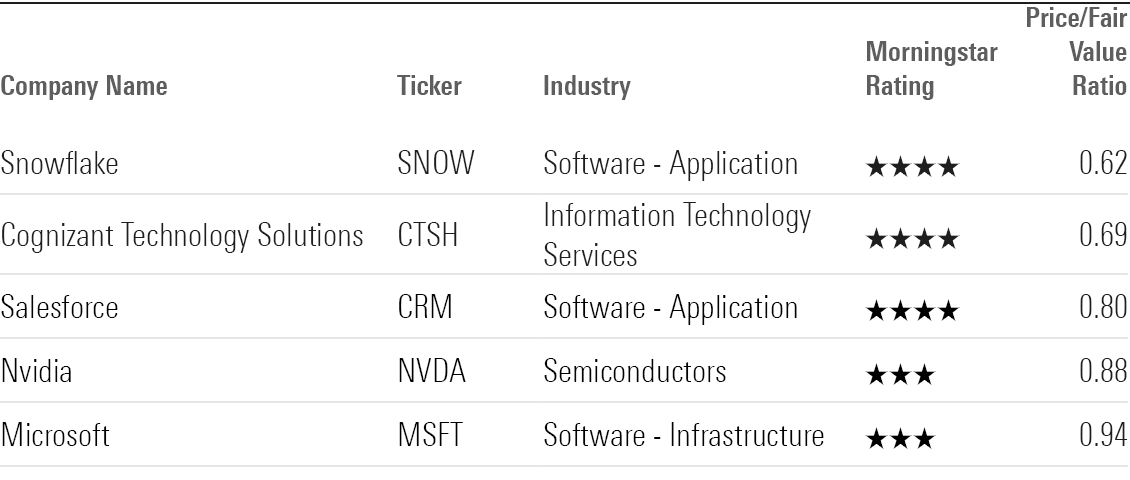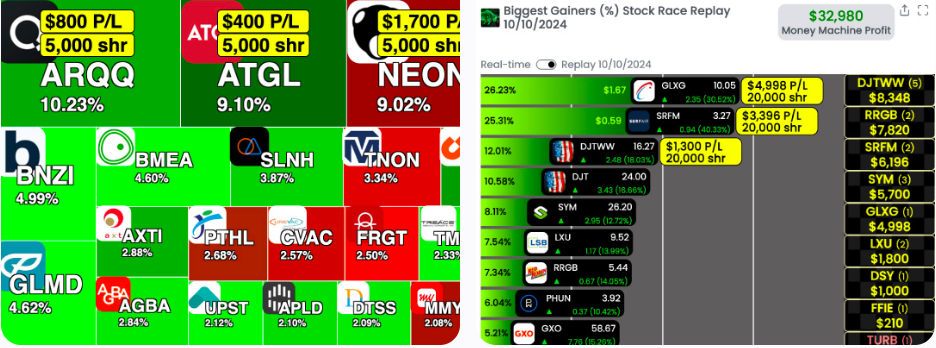20 Best Tips For Deciding On AI Stock Analysis Websites
20 Best Tips For Deciding On AI Stock Analysis Websites
Blog Article
Top 10 Tips For Pricing And Costing Of Ai Software For Predicting And Analysing Stocks
To ensure you get the best value, you must assess and price AI analysis and stock prediction platforms. Knowing the pricing structure is crucial to making an informed choice. Here are 10 suggestions to help you analyze the price and cost of these platforms.
1. Understand Pricing Model
Subscription-based: Check whether the platform charges an annual or monthly fee and what features are offered on each level.
Pay-per-use : Verify that the platform charges according to the amount of usage (e.g. transactions, requests for information, or forecasts).
Freemium: Check if a platform has a limited free tier and charges extra for premium features.
2. Compare Pricing Tiers
Find out what features are included in each price stage.
Scalability: Make sure that the pricing tiers you choose to use are compatible with your needs, whether you're an individual trader, a professional, or part of an institution.
Upgrade flexibility: Find out if it is possible to upgrade or downgrade the plan when you alter your requirements.
3. Evaluate Hidden Costs
Data charges: Find out if there are any additional fees for data that is premium (e.g. real-time data or advanced analytics).
Brokerage fees: Find out if there are any additional costs for the platform to be integrated with brokers or to execute trades.
API usage: Evaluate whether the cost of API access is more expensive or if API use is very frequent.
4. Demos and Free Trials and Test Drives
Trial period: Search for websites that provide a free trial or demo so that you can test their features before committing.
Trial limitations: Make sure to check whether the trial is free and includes all features or is restricted in terms of functionality.
No-commitment option If you aren't satisfied with the program, you may cancel it without any charge.
5. Look for discounts and promotions.
Discounts for annual plans: See whether there are any specials offered by the platform compared to their monthly plans.
Referral Programs Check if your platform offers discounts or credits to customers who refer other users.
Prices for bulk or institutional In the event that your business is a large one it is possible to ask about bulk or institutional pricing.
6. How to Evaluate Return on Investment (ROI).
Cost vs. value - Find out whether the capabilities, features, and predictions are worth the investment. Can it, for instance aid you in making a better decisions in trading or help you save time.
Examine the platform's performance and user reviews in order to estimate the potential return on investment.
Cost alternatives - Compare the platform's cost with the potential cost in the event that you do not use it (e.g. missed chance, analysis time manually).
7. Review and review cancellations and refunds Policies
Cancellation Terms: You may cancel your contract without any hidden fees or penalties.
Refund policy: Find out if the platform offers refunds for unused portions of your subscription.
Auto-renewal Check to find out whether your subscription renews automatically and find out how you can decide to opt out.
8. Pricing Transparency:
Clear pricing page - Be sure there aren't any extra charges on the pricing page.
Customer Support: Contact Customer Service for clarification of any unclear pricing information or added costs.
Contract terms: Review the conditions of service to be aware of the long-term commitments and penalties.
9. Compare yourself with your competitors
Feature comparison Comparing the prices and features of the platform to its rivals to make sure you're getting the best deal.
Review by users: Go through feedback from the users about the platform and determine whether it's worth it.
Market positioning: Determine whether the platform is priced as premium, mid-tier or budget option and whether it aligns with your expectations.
10. Calculate Long-Term Costs
Price increases: Determine whether the website has a track record of increasing prices and how often this occurs.
Feature Additions: Evaluate whether there are any new features in the current version or if you should upgrade.
Costs of scaling-up - Make sure that the price of the platform remains affordable, even if the volume of your transactions or data requirements increase.
Bonus Tips
Test multiple platforms. You can try multiple platforms for free, and then compare them.
Offer prices to negotiate: If have a large number of customers or belong to an organization, you can ask for special pricing and discounts.
You can find free educational tools on various platforms.
These suggestions will assist you to determine the cost and price of AI trading platforms that predict/analyze the prices of stocks. This way you can choose the platform that best matches your budget and offers the features and performance needed. A good-priced trading platform will find the perfect equilibrium between affordability and features which will help you maximize your success. Have a look at the top AI stock url for website advice including market ai, AI stock picker, ai investing app, incite, ai for investing, AI stock trading, ai chart analysis, ai investment platform, trading ai, best AI stock trading bot free and more.
Top 10 Ways To Analyze The Updates And Maintenance Of AI stock Trading Platforms
To ensure that AI-driven stock trading platforms and prediction platforms remain secure and efficient they should be regularly updated and maintained. Here are 10 top suggestions to analyze their update and maintenance strategies:
1. Regular updates
TIP: Find out how often the platform updates (e.g., weekly, monthly, quarterly).
The reason: A regular update shows the active development of market trends and the responsiveness to market changes.
2. Transparency is a key element in the Release Notes
Check out the release notes for your platform to find out what improvements and changes have been made.
Release notes that are transparent demonstrate the platform's commitment towards continuous advancement.
3. AI Model Retraining Schedule
Tip - Ask what frequency AI models are trained on new data.
Why? Markets evolve and models have to change to maintain accuracy and relevance.
4. Bug fixes and Issue Resolution
Tip Assess the speed at which a platform responds to the bugs that users report or fixes technical issues.
Reason: Rapid fix for bugs ensure that the platform remains reliable and functional.
5. Updates to Security
Tip: Verify that the platform is regularly changing its security procedures in order to safeguard the data of users and trade activity.
Why? Cybersecurity is important on financial platforms to prevent fraud.
6. New Features Integration
Tips - Find out if a platform has added new functions (e.g. enhanced analytics, new sources of data) based upon the feedback of users and/or market trends.
Why? Feature updates show the company's ability to innovate and respond to user needs.
7. Backward compatibility
Tip : Make sure updates do not disrupt functionality that is already in place or require significant configuration.
Why: Backwards compatibility provides users with a smooth experience when they are transitioning.
8. Communication between Users and Maintenance Workers
You can evaluate the communication of maintenance schedules or downtimes to users.
Why: Clear communication reduces interruptions and increases confidence.
9. Performance Monitoring and Optimization
Check to see if your platform is continuously keeping track of performance metrics like accuracy and latency, and optimizing its systems.
Why: Ongoing platform optimization ensures that it is effective and scalable.
10. Conformity to Regulatory Changes
Tip: See if your platform is updated with the most recent features, policies and laws regarding privacy of data or new financial regulations.
Why: It is important to comply with regulations to reduce legal risks, and maintain the trust of users.
Bonus Tip - User Feedback Integration
Make sure the platform includes active feedback from its users in its updates and upkeep processes. This indicates a focus on the customer to improving.
When you look at these factors by evaluating these aspects, you can be sure that the AI stock prediction and trading platform you select is maintained current, updated, and able to adapt to changing market dynamics. Take a look at the top ai copyright signals for website examples including stock predictor, AI stock price prediction, how to use ai for stock trading, ai share trading, best stock prediction website, chart analysis ai, AI stock prediction, ai options trading, stock predictor, ai options and more.